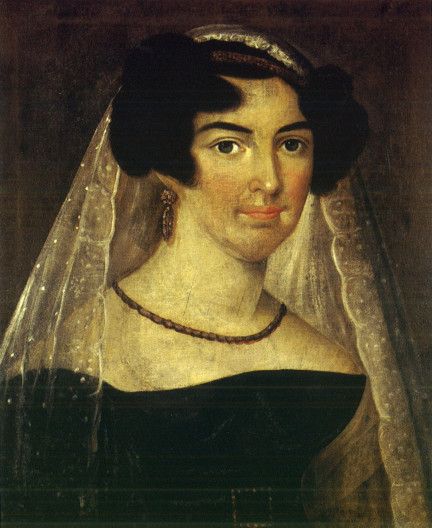If you mention the name of Carolina Belinich in Rijeka, there is almost no passer-by who will not smile widely. ”Carolina of Rijeka? Is there anyone who still doesn’t know about our Carolina?!” And if you are lucky, you will hear the story about a lady from Rijeka whose character and actions have remained engraved in the memory of her fellow townspeople until today, although she lived in the 19th century.
Carolina’s tale begins in 1813 when ships of the British navy appeared in front of Rijeka. It was the 3 July and five navy ships anchored at the distance of two nautical miles from the city. At first the citizens of Rijeka curiously observed the newcomers, thinking they wanted to renew their water supplies. A sudden broadside salvo made them take cover. The fire was returned from one of the city’s towers, and the enemy was hit. It didn’t help. Once the land cannons were silenced, 22 boats with smaller cannons and almost 600 British soldiers disembarked. During the landing, the fleet continued bombarding the area of the Old town centre and Trsat with cannon-balls. The British soldiers aboard the ships believed that Napoleon’s troops with which Britain was in conflict at the time were located there.
The frightened citizens ran as far away as possible from the city, as did the military forces situated in the town, and (what was worse) even the representatives of the town’s authorities decided to flee. The British began mercilessly burning the sailing ships docked at the pier on Fiumara and the fire jeopardized nearby houses. Amidst all that chaos, a young woman emerged from house N° 431 on Fiumara and began walking towards the British troops. She was very calm and her intention was to reach the commander of the conquering forces who was close to the artillery battery not far from the city centre. She wanted to speak to him. What did she expect would make him talk to her?
¬¬Wicked tongues had it in the years to follow, that the key reasons for her success were her age (she was only 22), the black dress she was wearing, and most of all her neckline. But these people forgot that this brave woman, Mrs Carolina Belinich, was not just anyone. She was born to a respectable family of Rijeka merchants, Kranjec, taking the Belinich surname in 1808 when she married a wholesale merchant, Andrija Belinich. Her father, Franjo, was a captain who had three houses, two mills, forests, a vineyard, and a sailing ship; he was also a founder of a wood and tobacco trading company etc. Thanks to his wealth and reputation, he was appointed as one of the Rijeka’s patrician councillors. The most important fact in this story is that in 1797, he was appointed as British vice-consul for that part of the Adriatic coast, with headquarters in Rijeka. He performed this function until 1806, when Carolina’s step-brother Ignazije took over.
At the moment when she stepped in front of the high ranking British officer, Carolina was the daughter and wife of two people who, as consular representatives, represented the same interests as the officer himself, that is the interests of the British crown. The course of their conversation remains unknown. But, there is no doubt that Carolina explained that further destruction of the town was useless as the enemy army had already left it. The citizens of Rijeka were also less than enthusiastic about the French rule, and considered the British soldiers their liberators. Were her words so persuasive? The best answer to that question was the end of the military action. The city was spared from further destruction, as were the citizens’ houses, merchandise warehouses and the moored ships. Everybody in the town was relieved. On the third day, the British fleet sailed away, looking for the French troops elsewhere.
During the attack on Rijeka, Carolina’s husband also distinguished himself for his courage, as a commander of the national guard. Thanks to his merits, he was appointed a town patrician. The citizens of Rijeka didn’t forget to make requital to Carolina, knowing how much she had risked with her courageous act as she was mother to four girls. The city authorities commended her in 1829, donated her portrait to the municipal museum in 1901 and in 1905 one of the streets was named after her.
That is what it was like yesterday. And today? A wharf in the very centre of the city port carries her name. If we step out from the wharf of Carolina of Rijeka to the Old city centre and stop in front of the St. Vitus Church, on the left side of the entrance, is an unusual item that draws attention, with a cannon-ball protruding out of the facade. Under the facade is a metal plate engraved with the year 1813 and the inscription: “The British sent us this fruit whilst chasing the French away from here”. The cannon-ball in the wall is one of those which flew over the heads of the citizens of Rijeka, and of the disastrous impact of which Carolina saved them.




